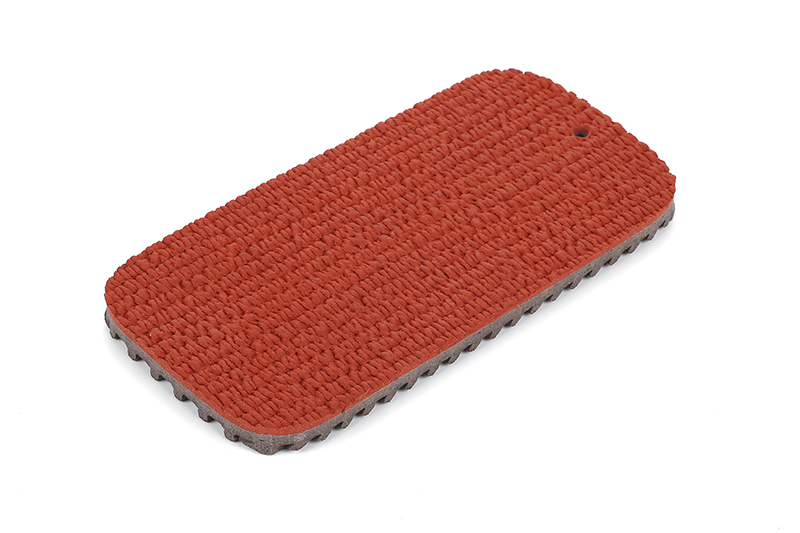ડીસેમ્બર . 10, 2024 06:24 Back to list
ground padding for playgrounds
Ground Padding for Playgrounds Ensuring Safety and Fun
Playgrounds are essential spaces for children's development, offering opportunities for physical activity, social interaction, and imaginative play. However, with the joy of play comes the potential for accidents and injuries. To mitigate these risks, ground padding in playgrounds has become a crucial aspect of design and safety standards. This article delves into the importance of ground padding, the various options available, and best practices for implementation.
The Importance of Ground Padding
Ground padding serves as a protective layer between children and the hard ground beneath. According to the Centers for Disease Control and Prevention (CDC), falls are one of the leading causes of playground injuries, with over 200,000 emergency room visits each year related to playground accidents. Installing appropriate ground padding can significantly reduce the severity of injuries resulting from falls, making playgrounds safer for children.
Beyond safety, padded ground surfaces can also enhance the overall play experience. Well-designed padding not only cushions falls but also provides a visually appealing environment that encourages exploration and creativity. Different textures and colors can stimulate children's senses, enhancing their engagement and enjoyment of the play area.
Types of Ground Padding
There are several types of ground padding commonly used in playgrounds, each with its unique benefits and drawbacks
1. Wood Chips A popular choice due to its natural appearance and affordability. Wood chips are effective at absorbing impact but can require regular maintenance to keep them at an adequate depth and to prevent decomposition.
2. Rubber Mulch Made from recycled tires, rubber mulch offers durability and excellent shock-absorbing qualities. It does not decompose like organic materials, making it a low-maintenance option. However, it can be more expensive than other choices.
3. Pea Gravel This material is easy to install and provides good drainage. However, it can be displaced easily and may require frequent replenishing. Additionally, it can be uncomfortable for children to fall on compared to other padding options.
ground padding for playgrounds

4. poured-in-place Rubber This type of padding is a mixture of rubber particles and a binding agent, which is poured on-site, creating a seamless surface. It offers excellent impact absorption and can be molded into various shapes and designs, enhancing the aesthetic of the playground. Its primary disadvantage is the higher upfront cost compared to loose-fill options.
5. Synthetic Turf Often used in modern playground designs, synthetic turf provides a soft surface that mimics grass while also offering excellent drainage and durability. It can be costly to install but requires minimal maintenance and provides a consistent playing surface.
Best Practices for Implementation
When implementing ground padding in playgrounds, several best practices should be followed to ensure effectiveness
1. Depth Requirements For loose-fill materials like wood chips, rubber mulch, and pea gravel, maintaining the appropriate depth is crucial. Generally, a depth of 12 inches is recommended for optimal shock absorption, depending on the height of the equipment.
2. Regular Maintenance Ground padding requires regular inspections and maintenance. Loose-fill materials can become displaced, while synthetic surfaces may develop wear and tear. Monitoring these surfaces ensures they maintain their protective qualities.
3. Compliance with Standards Familiarize yourself with local and national safety standards for playgrounds, such as those set by the Consumer Product Safety Commission (CPSC) and the American Society for Testing and Materials (ASTM). Compliance with these guidelines is essential for ensuring a safe play environment.
4. Accessibility Ground padding should provide accessibility for all children, including those with mobility challenges. Ensuring that surfaces are even and navigable can enhance inclusivity in playground design.
In conclusion, ground padding is a vital component of playground safety, helping to prevent injuries while promoting an engaging environment for children. By choosing appropriate materials and adhering to best practices, playground designers and caretakers can create spaces that are not only safe but also enjoyable for all who use them.
-
Pickleball Court for Sale - Premium Flooring Solutions for Sports Venues
NewsJun.10,2025
-
Maple Grove Outdoor Pickleball Courts - Premium Conversion & Durable Materials
NewsJun.10,2025
-
Best Pickleball Outdoor Courts Solutions Convert Tennis Courts, Outdoor Covered Courts, Maple Grove Options
NewsJun.10,2025
-
Convert Tennis Court to Pickleball Fast & Affordable
NewsJun.09,2025
-
Indoor Outdoor Pickleballs Durable & All-Weather for Any Court Play
NewsJun.09,2025
-
Cost to Build Indoor Pickleball Court Costs & Savings Guide
NewsJun.09,2025

